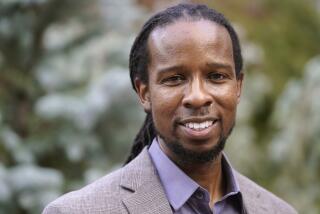Tsongas Camp Had ’87 Data, Doctor Says : Cancer: In interview, physician contends he gave copy of disease chronology to campaign aides, who asked him to deal with media on individual basis.
- Share via
Paul E. Tsongas’ personal physician said Thursday that he had included a 1987 recurrence of the former presidential candidate’s cancer in a three-page chronology of the disease that he prepared in February, but the chronology was never made public.
In an interview, Dr. Tak Takvorian of the Dana-Farber Cancer Institute in Boston said he discussed with the Tsongas campaign the release of such a chronology as an alternative to responding individually to dozens of press queries about the health of the former Massachusetts senator, who suspended his campaign for the Democratic nomination March 19.
Takvorian said he sent a copy of the chronology to campaign officials, who asked him to continue to field media inquiries individually. He did so--almost never mentioning the recurrence of Tsongas’ lymph node cancer, which is known as non-Hodgkin’s lymphoma. “There was never any instruction that anything was to be held back or denied or not focused upon,” Takvorian said. But he said he did not think it was appropriate to release the chronology on his own.
Campaign officials could not be reached for comment.
The candor of Tsongas’ physicians in their public discussion of his medical history emerged as an issue this week, after the New York Times made public the cancer’s recurrence. During the campaign, Tsongas said he had been cancer-free after undergoing a bone-marrow transplant in 1986--about eight months before the recurrence.
Earlier this week, Tsongas said he did not realize he had had a recurrence, although he was aware that his doctors had prescribed additional radiation treatment after finding an enlarged lymph node under his left arm pit.
The disclosure also has raised questions about the accuracy of the repeated public statements of Takvorian and others stressing that the tumor is unlikely to return.
When informed of the recurrence, two oncologists not involved in caring for Tsongas said it was a worrisome event.
“The recurrence changes his prognosis totally,” said Dr. Alexandra M. Levine of the USC School of Medicine. “It means that he has this malignant clone of cells in his body. Eventually, the tumor may relapse again, although this may be in 10 or 20 years. He is not cured.”
The recurrence “can’t be good,” said Dr. John A. Glaspy of the UCLA Medical Center. “It has to increase the chances that he will eventually relapse.”
Both Levine and Glaspy said, however, that the form of non-Hodgkin’s lymphoma that Tsongas has tends to grow slowly and is relatively easy to control with medications.
Takvorian said that, in retrospect, “maybe” it would have been better to simply give the objective data and leave it to specialists not connected with the case to interpret the results. “I am feeling very apologetic today and yesterday regarding all of this,” he said, adding that for candidates for public office, “reassurance by the immediate care giver in this day and age may not be good enough.”
The oncologist maintained that he did not usually discuss the relapse because he considered it less significant in the overall context of Tsongas’ illness and because he had become accustomed to discussing the candidate’s health in “broad strokes.”
The recurrence “obviously is significant to a lot of people,” Takvorian said. “It is of less interest to us because of the time that has passed since the event.”
Takvorian said that in his view it is far more important that Tsongas is in excellent health more than five years after he underwent an experimental bone-marrow transplant and nearly five years after the relapse was treated with radiation therapy.
The physician also drew a distinction between a localized recurrence of the tumor in one area of the body and a relapse throughout the body, which he would have considered far more serious. He acknowledged that many specialists debate the validity of this distinction.
Tsongas said this week that if he decides to seek national office again he will submit his medical records to an independent review panel for analysis. The panel, according to Tsongas, would consist of experts selected by the Dana-Farber Cancer Institute and would release its findings to the public.
“The Tsongas case shows that the media cannot and should not rely solely on information from a candidate’s own doctor,” said Arthur Caplan, director of the Center for Biomedical Ethics at the University of Minnesota in Minneapolis. “You’ve got to track down the information from independent sources.”
In an interview with The Times on Feb. 14, Takvorian said that “the overwhelming number of recurrences occur within the first year following transplant”--but did not mention that his patient had suffered exactly such a relapse.
Takvorian said Tsongas was “in the statistical category that he was not going to relapse.” In fact, most statistical predictions of long-term survival in lymphoma patients are based on their remaining free of cancer during the first year after the transplant.
In 1983, while serving in the Senate, Tsongas developed swollen lymph nodes and was diagnosed with the cancer. In August, 1986, after the tumor progressed, Tsongas underwent intensive chemotherapy, high-dose radiation therapy and the bone-marrow transplant--treatments designed to rid his body of the disease.
In the spring of 1987--about eight months later--Tsongas developed an enlarged lymph node in his left armpit. The lymph node was biopsied and examined under a microscope; non-Hodgkin’s lymphoma cells were found. The recurrence was treated with radiation.
Steinbrook reported from Los Angeles and Ross from Washington.
More to Read
Get the L.A. Times Politics newsletter
Deeply reported insights into legislation, politics and policy from Sacramento, Washington and beyond. In your inbox twice per week.
You may occasionally receive promotional content from the Los Angeles Times.










